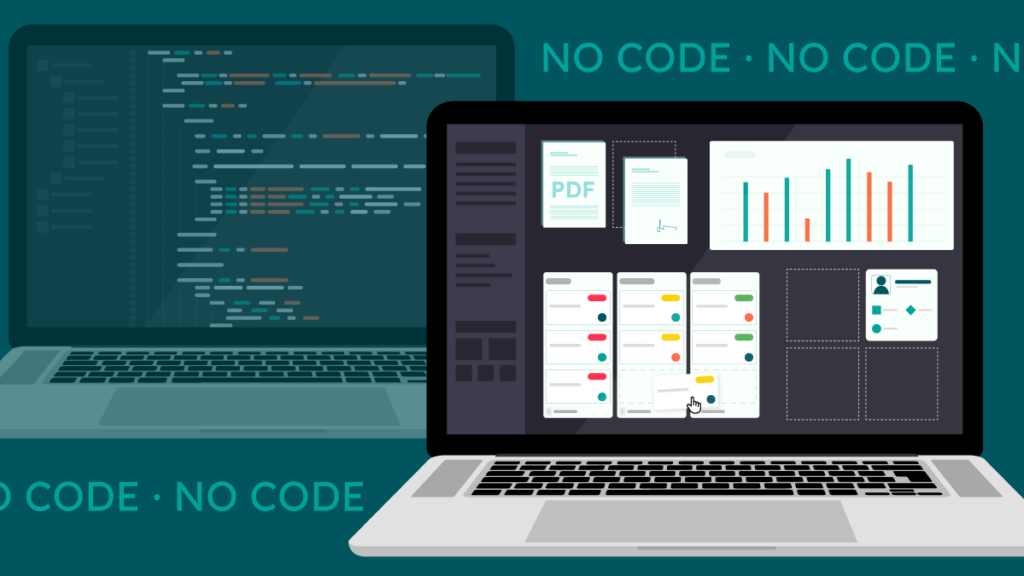
In the rapidly evolving landscape of technology and digital innovation, no-code development has emerged as a transformative force, democratizing the process of creating software and empowering individuals and organizations to build powerful applications without writing a single line of code. From entrepreneurs and startups to established enterprises, no-code platforms offer a wide range of benefits, enabling users to streamline workflows, accelerate development cycles, and bring their ideas to life with unprecedented speed and agility. In this comprehensive guide, we’ll explore everything you need to know about no-code development, from its origins and principles to its applications and future prospects.
1. What is No-Code Development?
No-code development refers to the practice of building software applications without the need for traditional programming languages or coding skills. Instead of writing code manually, users leverage visual interfaces, drag-and-drop tools, and pre-built components to design and deploy applications quickly and efficiently. No-code platforms typically provide a range of features, including visual editors, data integrations, and workflow automation capabilities, enabling users to create sophisticated applications with minimal technical expertise.
2. The Rise of No-Code Platforms
The rise of no-code platforms can be attributed to several factors, including the growing demand for digital solutions, the shortage of skilled developers, and advancements in technology that have made it easier to abstract away complexity and automate repetitive tasks. By democratizing software development and lowering the barriers to entry, no-code platforms have empowered a new generation of creators and innovators to build applications and solve problems in ways that were previously inaccessible or prohibitively expensive.
3. Key Principles of No-Code Development
No-code development is guided by several key principles, including:
- Accessibility: No-code platforms are designed to be accessible to users of all skill levels, from non-technical business users to seasoned developers, enabling collaboration and innovation across teams.
- Visual Development: No-code platforms emphasize visual development tools and interfaces, allowing users to design and customize applications using intuitive drag-and-drop functionality.
- Modularity: No-code platforms leverage modular components and pre-built templates to accelerate development and promote reusability, enabling users to create complex applications by assembling simple building blocks.
- Integration: No-code platforms facilitate seamless integration with external data sources, APIs, and third-party services, enabling users to leverage existing systems and resources within their applications.
4. Applications of No-Code Development
No-code development can be applied to a wide range of use cases and industries, including:
- Business Process Automation: No-code platforms enable organizations to automate repetitive tasks, streamline workflows, and improve operational efficiency across departments.
- Website and App Development: No-code platforms empower individuals and businesses to create websites, mobile apps, and digital experiences without the need for coding skills or technical expertise.
- Data Visualization and Analytics: No-code tools allow users to analyze, visualize, and interpret data from multiple sources, enabling data-driven decision-making and insights discovery.
- E-commerce and Online Stores: No-code platforms enable entrepreneurs to launch and manage e-commerce stores, digital marketplaces, and online businesses with ease, from product catalog management to payment processing and order fulfillment.
5. The Future of No-Code Development
The future of no-code development is bright, with continued innovation and advancements driving further adoption and expansion across industries. As no-code platforms evolve, we can expect to see:
- Increased Integration and Interoperability: No-code platforms will continue to integrate with a wider range of data sources, APIs, and services, enabling users to build more powerful and interconnected applications.
- AI and Machine Learning: No-code platforms will leverage AI and machine learning algorithms to automate tasks, provide intelligent recommendations, and enhance the user experience.
- Collaboration and Community: No-code platforms will foster collaboration and community engagement, enabling users to share templates, components, and best practices, and learn from each other’s experiences.
- Empowerment and Inclusion: No-code platforms will empower individuals from diverse backgrounds and skill levels to participate in software development, driving innovation and creativity at scale.
In conclusion, no-code development represents a paradigm shift in the way software is created, democratizing access to technology and empowering users to build applications and solve problems without traditional coding skills. By embracing the principles of accessibility, visual development, modularity, and integration, no-code platforms are revolutionizing the way individuals and organizations approach software development, enabling innovation, agility, and growth in the digital age. Whether you’re a seasoned developer looking to accelerate your workflow or a non-technical user with a vision to bring to life, no-code development offers a world of possibilities and opportunities to explore.